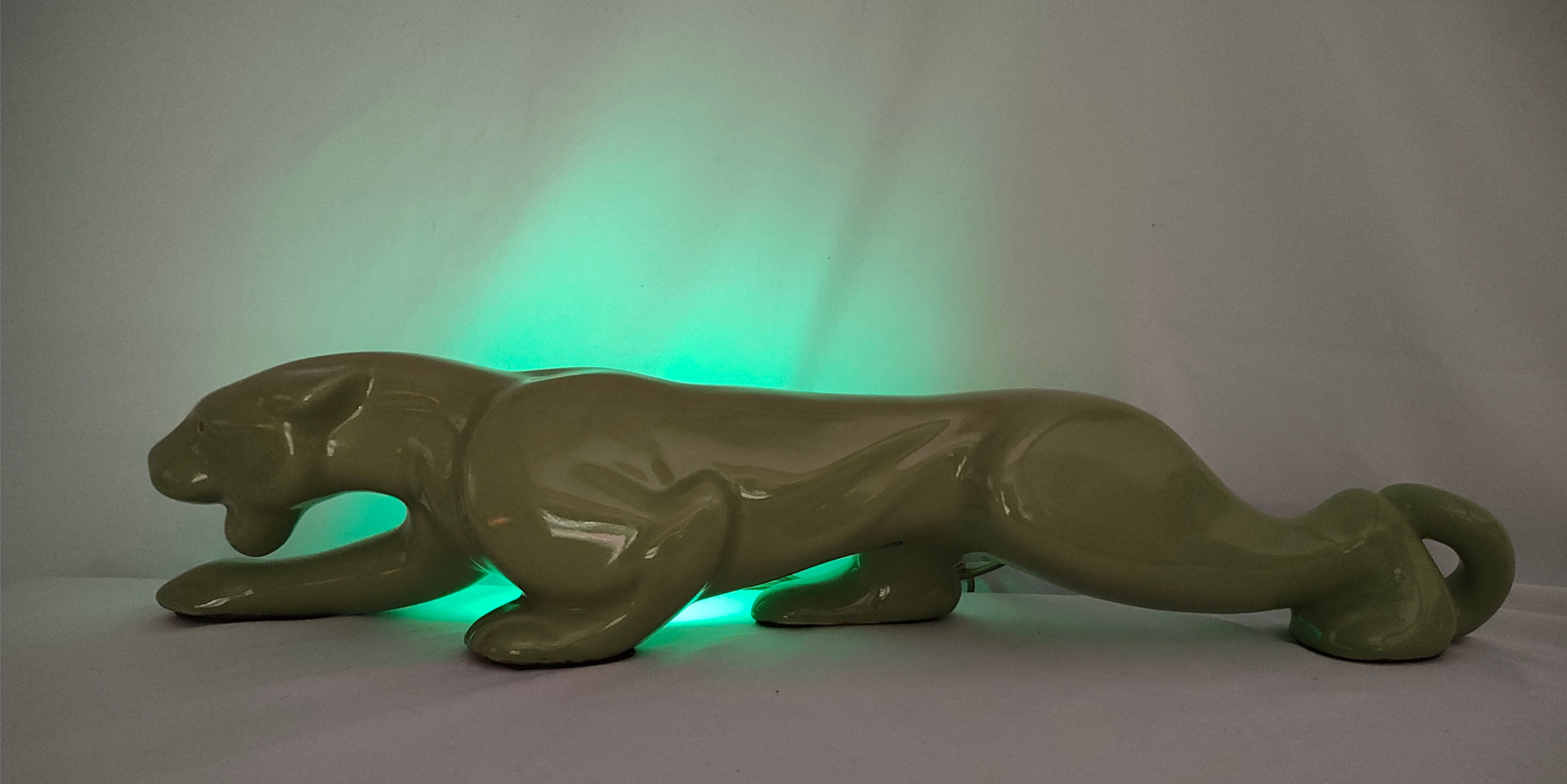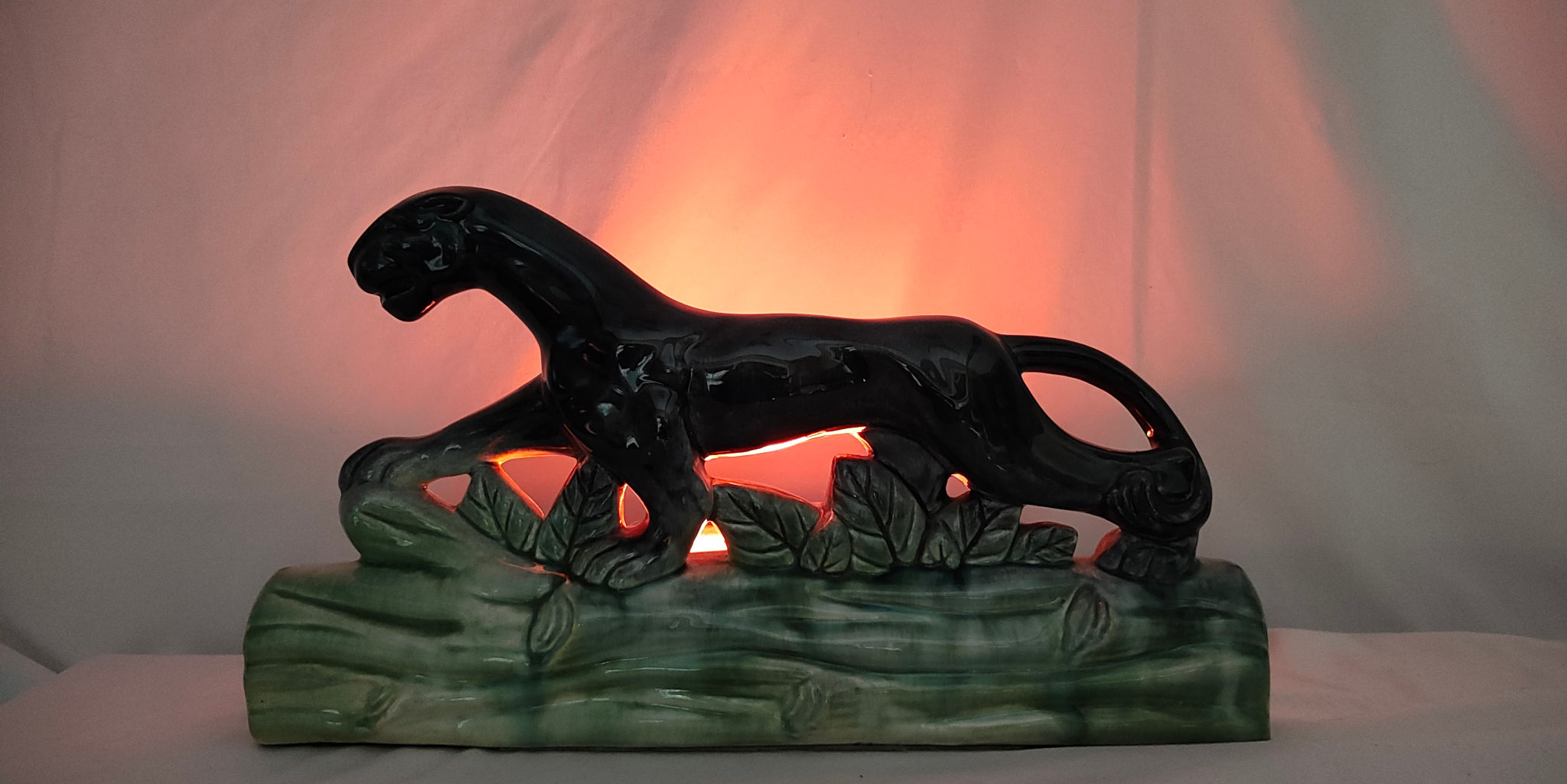Panther TV Lamp Resource
From the late 1940's through the 1950's, television sales grew exponentially in the United States, and millions of people bought their first television set. Special lamps that provided indirect light to reduce eye strain while watching the bright, low resolution images in darkened rooms were called TV lamps, and were placed on top of the television set to light the wall behind it. Many appliance and furniture stores gave TV lamps away as complimentary gifts with the sale of a TV set or livingroom furniture (I learned this from my father-in-law who delivered furniture back in the day). Panther themed TV lamps were very popular.
I have been collecting panther TV lamps for over 30 years and have found that, even with experience, it can be difficult to tell one panther lamp from another. This site is meant to point out particular distinguishing features of similar stalking panther designs by Jacqueline, Rite Lite and others. This is not a price guide. This information may not necessarily be useful to identify the designer, manufacturer, or potter, nor is this a comprehensive list of all panther lamps. This project was intended to catalog my collection, but I've learned a lot in the process, and feel obliged to share what I have learned.
List of References
Online
The original TV Lamps Site on Archive.org
Fantastic body of work by Mark Stevens. This is still a useful reference - a trove of information. The present domain, "tvlamps.net", changed hands sometime in 2022 and now appears to be generated by artificial means, i.e.; a bot. The information on this newer site is not very useful, and in many cases does not even apply to TV lamps. The original TV lamp site can only be found through the Wayback Machine.
Anna Van Briggle Pottery
Insightful information not only about the Anna Van Briggle line of pottery, but about some of the technical aspects of pottery and glazing as well.
Stalking Black Panther
Brief history of Haeger Potteries with a picture of the first "dragging tail" panther.
The Iconic Royal Haeger Panther by John Magon
This document is a supremely informative work regarding the stalking panther design that influenced all stalking panthers since. This is posted in the Royal Haeger Pottery Collectors group on Facebook.
Texans Inc.
Another impressive work by Mark Stevens detailing the history of this very productive ceramic lamp factory in Bangs, Texas.
Books
All of these books have a section with panther lamps. Some have better pictures than others, but there are many, many panther lamps, especially of perched panthers that are not on this site. These books are out of print, but not too difficult to find used online.
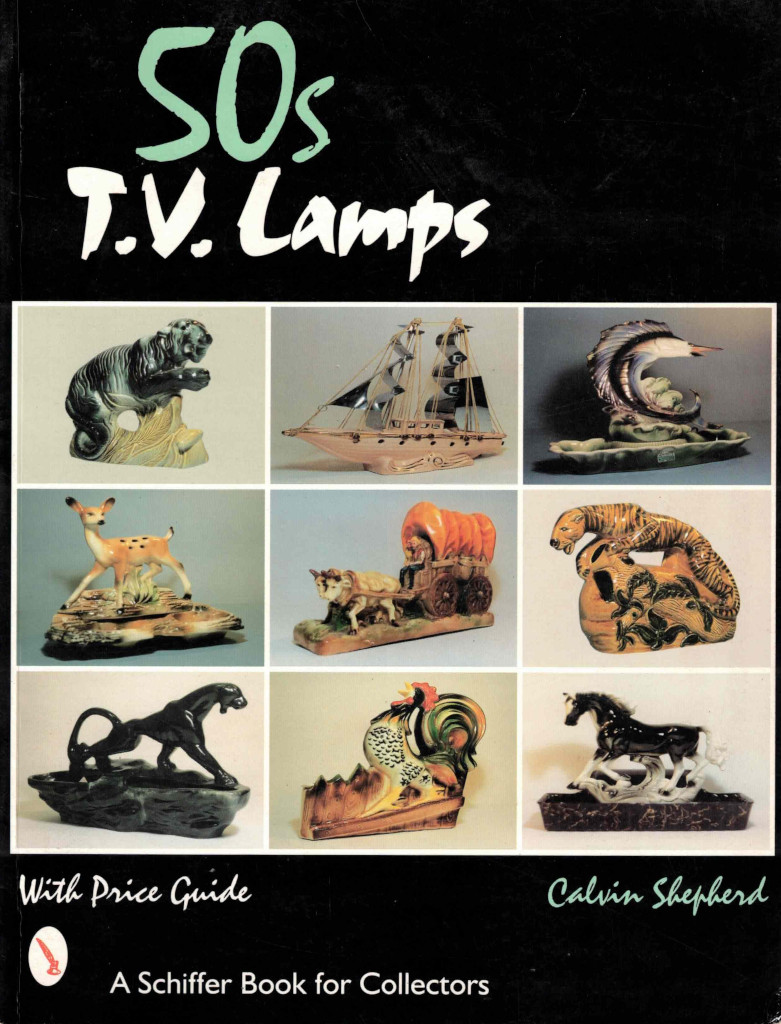
50s TV Lamps by Calvin Shepherd - ISBN 0-7643-0601-4
This 1998 book has many pictures from private collections, but very little information. Some names are misspelled, like "Jucqulig" instead of "Jacquelin" and "La Maine" instead of "Le Mieux".
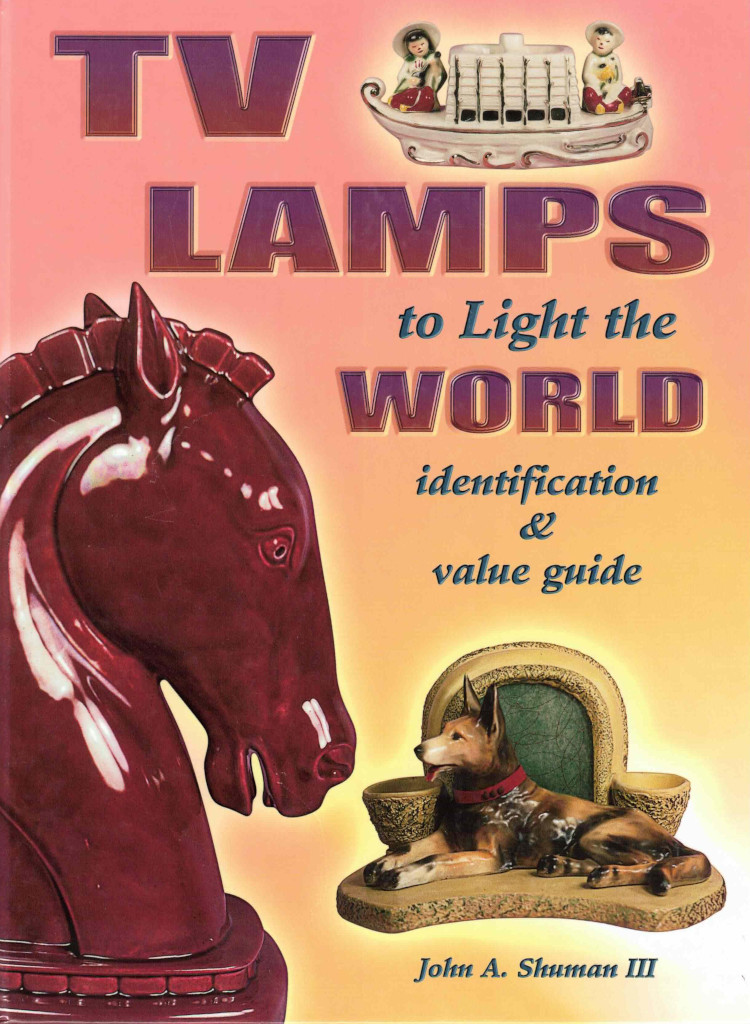
TV Lamps to Light the World by John A. Shuman - ISBN 1-57432-506-X
Printed in 2006, this book details a broad range of information concerning TV lamps; potters, distribution, catalog pages, invoices, and anecdotes. This is a must-have book for collectors.
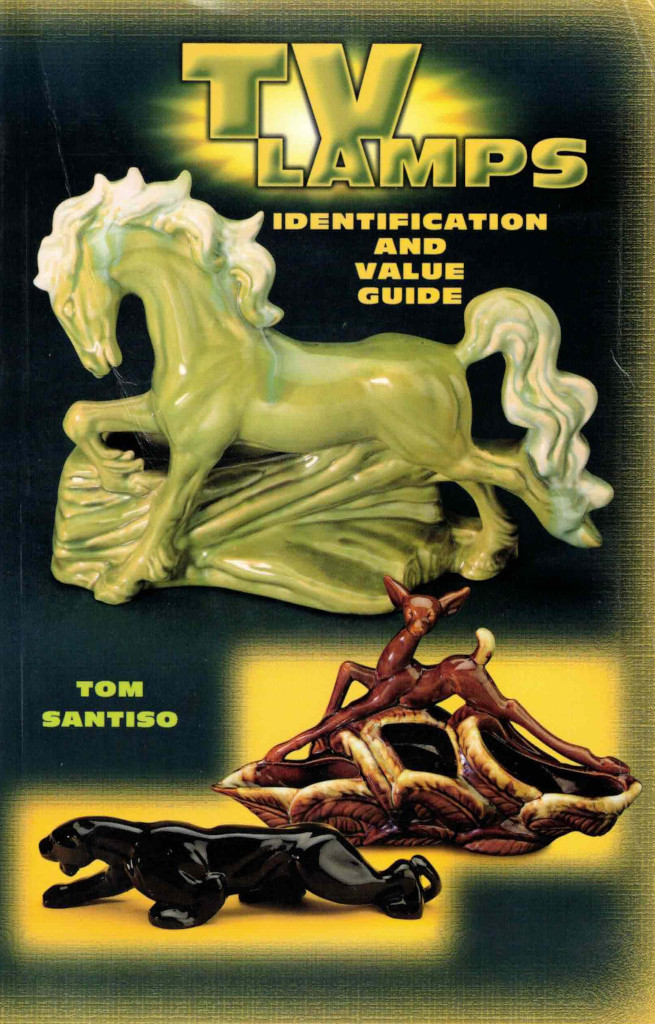
TV Lamps: Identification and Value Guide by Tom Santiso - ISBN 1-57432-128-5
This book from 1999 is similar to the first book in that it has many pictures but not much information. The value listings, now over two decades old, are interesting in that some of the valuations for very common panthers are higher than they are now.
On Value Guides
There is an obvious downside to publishing a value guide that is not a periodical. It is inevitable that prices will rise or fall over time. Times will change and anything can affect the market value - one appearance in a memorable film scene, for example, could increase the value of a particular lamp exponentially. A cultural or economic shift could also greatly affect prices and desirability (of anything, not just TV lamps), as they have throughout history.
The most up to date price guide, in my experience, has been eBay. One can peruse the sold or completed items listings to see what is actually selling and see how much it sold for. Just as important as the ones that have sold, are the ones that did not sell. Most often, the ones that did not sell were priced too high, with a smaller percentage of lamps that did not sell due to lack of appeal.
Identification
It is very difficult to identify the brand/potter of a TV lamp without a label, stamp, or signature. There were many more potters in the 1950's than post-millennium; some designs were plagiarized, and some were re-designed by the potter. Some designs were solely made for resale and give no indication of the potter that made the piece. Panthers, a very popular theme, defy identification for the above reasons. The only way these can be positively identified is by catalog pictures & illustrations, or if the panther has marking or a label. Sorry, but Grandma cannot be relied upon to identify a given panther as there were simply too many that were too similar, too long ago (but do listen to Granny tell of how she and Grandpa bought their first television, because it is almost always an interesting story).
Sometimes a panther can be identified by its designer - Howard Kron was a well-known designer, and his distinctive panthers were often tall, thin, and upright. Kron worked for several potteries, and some designs may be identified, in part, by following his career. Glazes are another way to identify a maker. Some potters, such as Phil-Mar, had distinctive glazes that make their TV lamps easy to identify. These two approaches, however, require a lot of research and are not for the casual collector.
